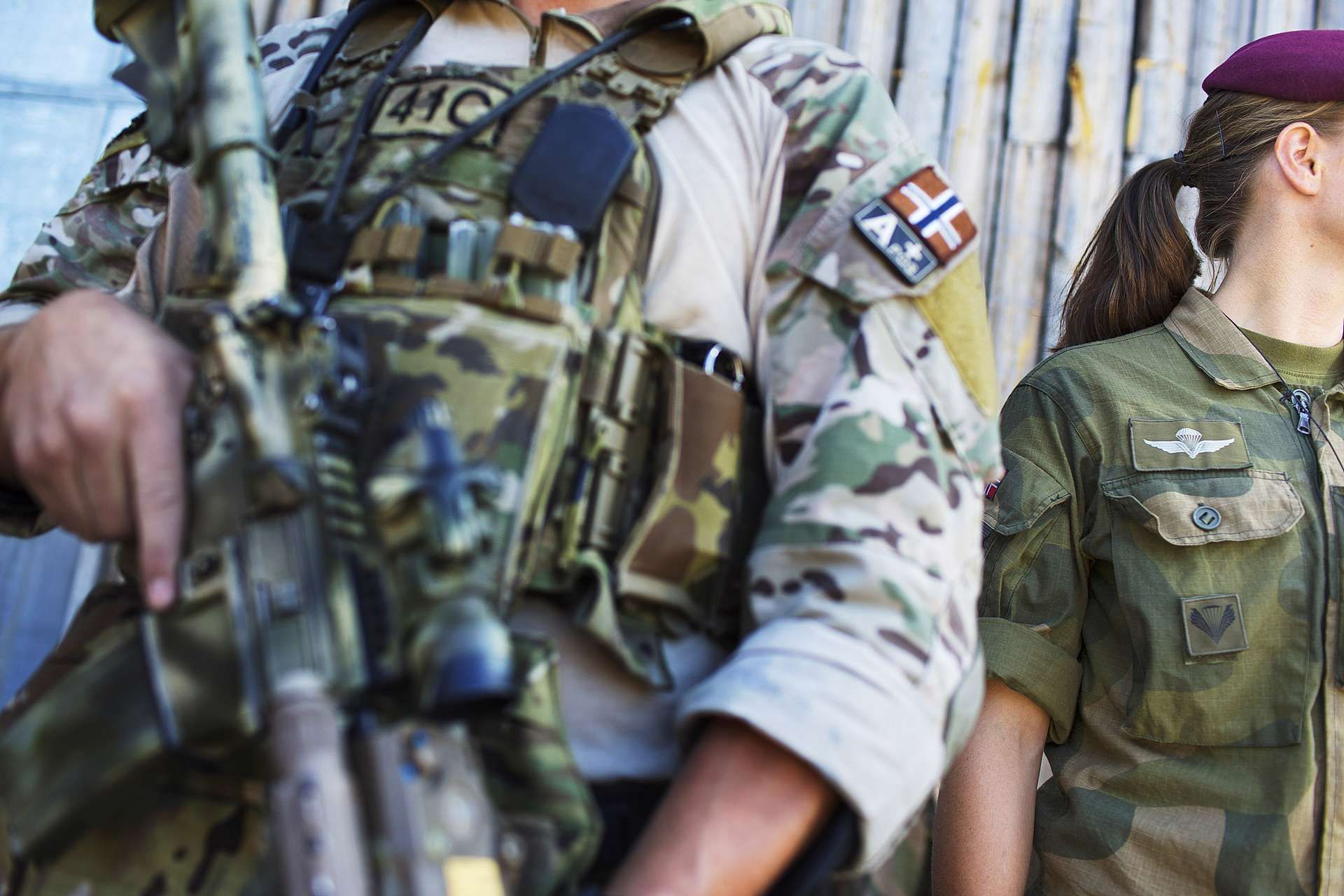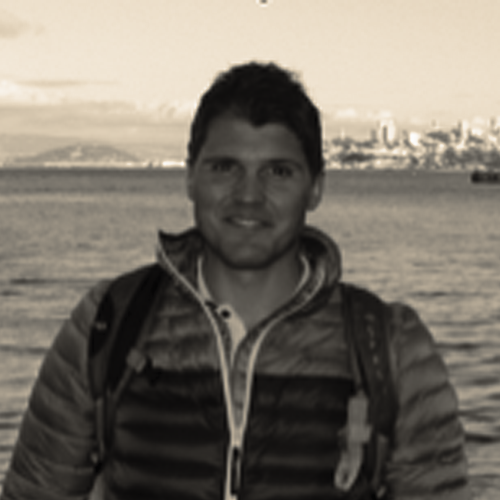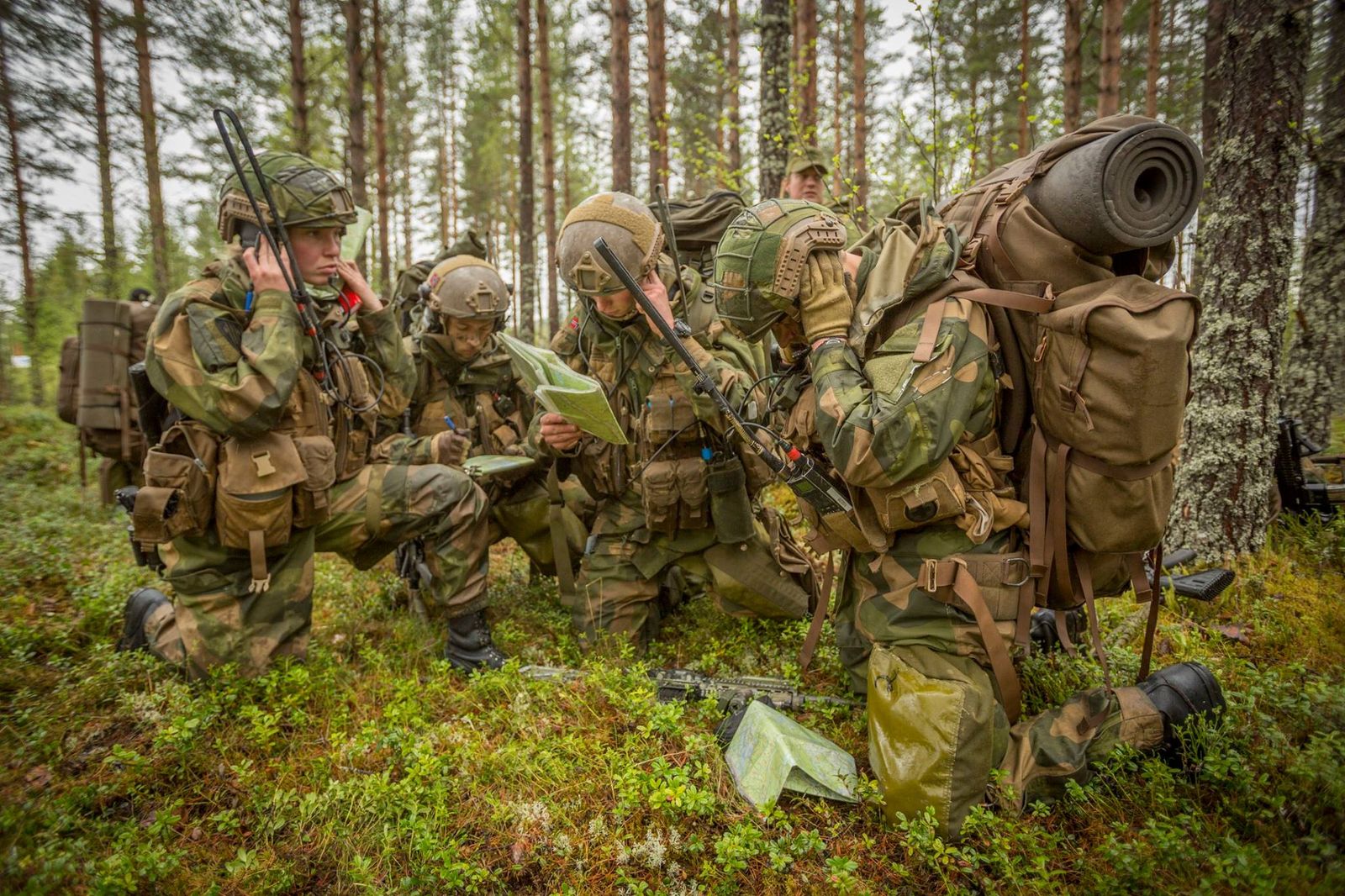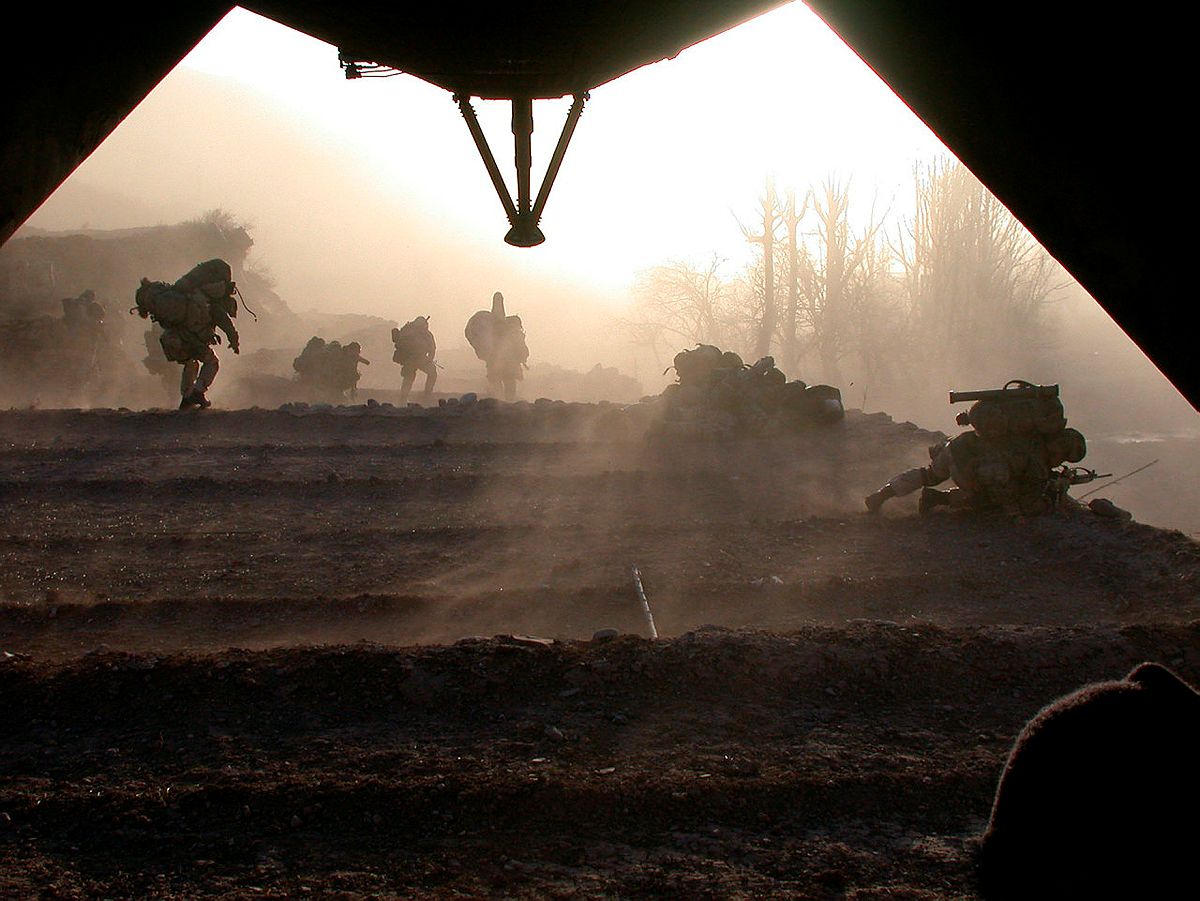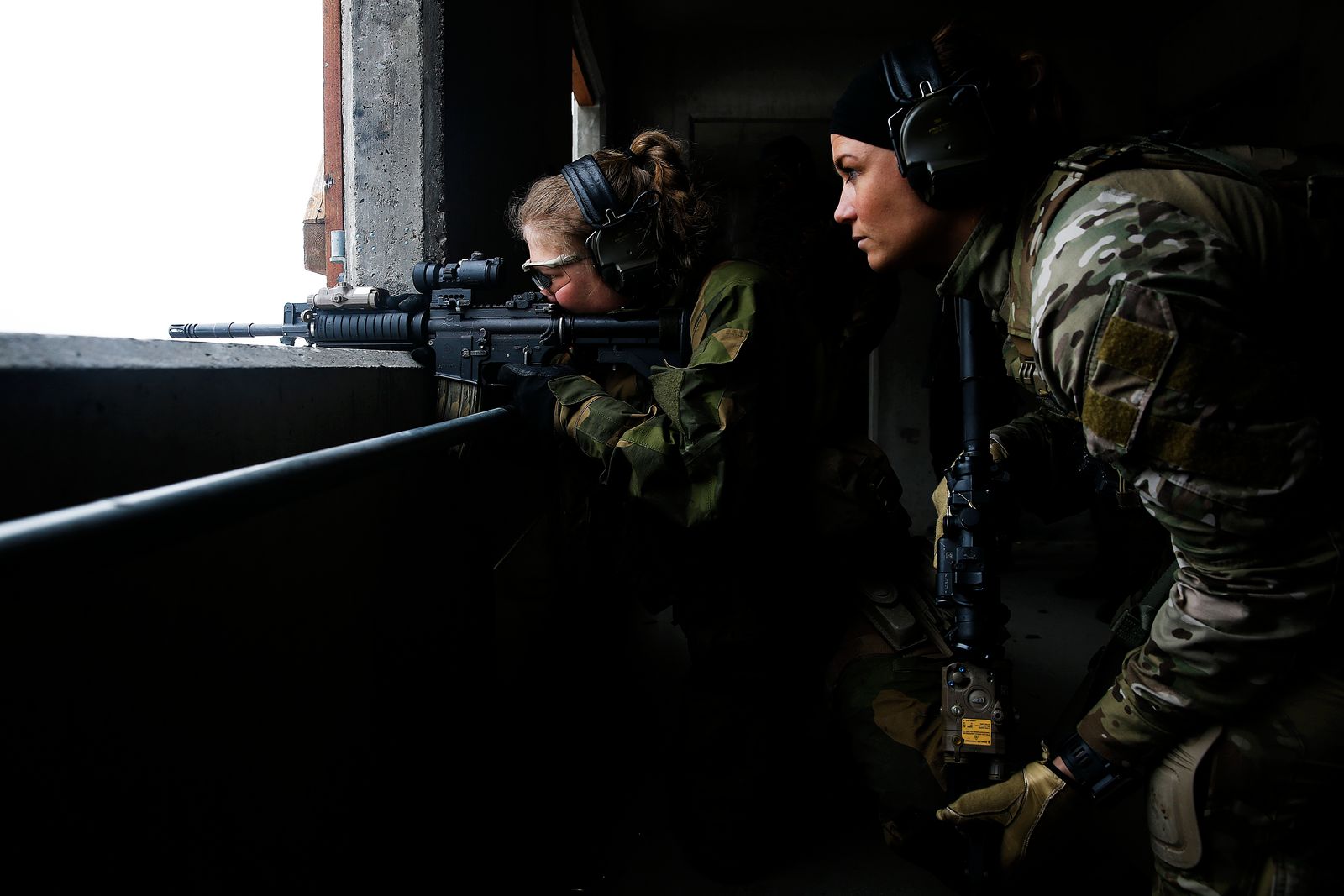Read part 1 here.
Direct Action (DA)
What is actually DA? [lxxv] The core activity Direct Action is defined as “offensive operations conducted by SOF which [are] limited in scope and duration in order to seize, destroy, disrupt, capture, exploit, recover, or damage high value or high pay-off targets.”[lxxvi] DA consists of different types of offensive operations, including “raids, Ambushes, Assaults, Terminal Guidance Operations, Recovery Operations, Precision Destruction Operations, and Opposed boarding operations.”[lxxvii]
DA can represent a high level of risk for own forces, and the techniques used in DA are potentially physically demanding. The level of precision expected during DA might be high; it is anticipated specific effects by the use of DA; and, DA operations usually involve a “planned withdrawal from the immediate objective area.”[lxxviii]From my point of view, this activity is the most concrete of NATO’s defined core activities. DA is the activity where the physical condition of a SOF unit’s personnel and equipment matters most. A unit consisting of operators who are the strongest, have the best endurance, shoot the most accurately, shoot the fastest, and so on will be better suited to DA operations compared to a unit consisting of operators who are weaker, have less endurance, shoot less accurately, shoot more slowly, and so on. Because women in general are not likely to be stronger or to have better endurance compared to the men that usually sign up for SOF duty, there are no obvious reasons why women should contribute to any DA role.
Nevertheless, the less obvious reasons make the difference here. The less obvious reasons tell us that, in the future, it will be highly relevant to let the very few extraordinary women who actually have the physical and mental capacity to meet SOF standards participate in DA operations. These include the following.
- Psychological effect on specific adversaries and groups within the population, both home and abroad.
Having women conduct DA can potentially create different psychological effects on adversaries compared to if only men conduct DA, if it is advertised and presented in the correct manner. In some cultures, especially among Islamic fundamentalists, for example, certain members of the Islamic State (IS), there is actually a difference between being killed by a man and being killed by a woman on a battlefield. Based on extreme interpretations of religion, these fundamentalists believe that, if men kill them, they will become martyrs, and if women kill them, they will not.[lxxix] The psychological effects women are able to produce by conducting DA can be exploited to more than only affecting a potential adversary psychologically; they also might help tell a more convincing narrative to groups of a population that are undecided on which combatant to support in order to gain favor. Or, as John Arquilla puts it, we might be able to tell a “story that impels individuals to action.”[lxxx] It is also possible to use this to gain public support at home. To create either of these psychological effects, to affect either an adversary or a group in the population, women are needed to do DA. Of course it is possible to pretend that women do DA without actually doing it, but my assessment is that doing so will create more negative effects when the truth is revealed. For example, it opens up opportunities for an adversary to create a negative counter-narrative, and the credibility of the military involved then takes a huge blow. The support in a population might be lost, and this kind of deceit can backfire. If the narrative is used to gain public support at home for the troops fighting in a conflict, the disclosure of a lie might also have negative effects. - Physical access and concealment, and psychological and cultural access.
As mentioned earlier, women may be able to obtain unique physical access to particular areas, such as areas where a man’s presence would be detected or where a woman’s presence represents something unexpected, or an element of surprise. In some DA scenarios, physical access and the ability to conceal oneself can be of critical importance for successful mission execution. Risk to both mission and force are potentially affected. There are numerous of potential scenarios where physical access and concealment are essential for mission success. Nevertheless, I highlight only three scenarios.
First, we have a scenario where a SOF unit is tasked to produce a specific kinetic effect on a specific target. The best available course of action is to conduct a Terminal Guidance Operation, which is described in NATO SOF doctrine as DA.[lxxxi] Since the rules of engagement in this scenario require the SOF unit to designate the target, the unit needs to move operators to a location that makes the designation possible. In this particular scenario, the only location that makes this target designation possible is in an area that only female operators will be able to access without being compromised. Without an operator in that location who is able to designate the target, the SOF unit will be unable to produce the specific kinetic effect that it is tasked to produce.
Second, we have a scenario where a SOF unit is tasked with producing a specific effect on a specific target. In this scenario, the effect requested is of a time-sensitive and well-defined nature. The best course of action available to secure mission success is to conduct an ambush, which is described in NATO SOF doctrine as DA.[lxxxii] The best location to set up an ambush is within an urban area where there usually are no challenges for either men or women to move freely. Nevertheless, there is a better chance for women to leave this urban area without being compromised after incidents like an ambush, a car bomb, or an assassination. This is because the security forces in the area consist mainly of men and because the security forces often prioritize the arrest of all males present in situations like this, while they let females go, based on cultural norms and expectations. The unique physical access is here represented by the ability to “withdraw from the immediate objective area,”[lxxxiii] which is defined as one of the characteristics of DA operations.
Third, we have a scenario where a SOF unit is tasked with searching for, locating, and returning sensitive equipment in an adversary controlled area. The best course of action available to return the sensitive equipment is to conduct a Recovery Operation, which is described in NATO SOF Doctrine as DA.[lxxxiv] The area where the sensitive equipment is expected to be located is within an urban area that men will not be able to access without being compromised. In addition, sources indicates that a local group of widowed women, which is known to be semi-supportive to your cause, is in possession of the particular piece of sensitive equipment needed. The group is known to speak more supportively about the FETs in the area, compared to other units. The overall assessment tells us that this group is more likely to cooperate with a unit consisting of female operators, compared to a unit consisting of only men or a mix of men and women. - Justification and validation of the doctrinal activity MA
Often when MA operations are conducted, NATO SOF emphasizes the importance of having both women and men in the organizations the military assistance is directed towards. To be able to advocate the integration of women and men in their organization, in cultures where it is not obvious, with any kind of credibility, the advising organization should set a good example of this integration. If women are excluded in any manner in the organization that gives advice, it will become more challenging to convince the advised organization that it is the right thing to do.

DA History
There are several examples of this from WWII and from the conflicts in Iraq, Syria, and Afghanistan that show how women can make a relevant contribution to SOF-type DA operations. During WWII, a group of young women joined the Norwegian resistance movement in the northern parts of Norway.[lxxxv] These women ended up working as snipers in a guerilla-like war against the Germans. The women were able to operate without being compromised or detected in areas and in ways men could not. One of these women, Mary Hunstad, gained tremendous respect within the resistance movement. She had the reputation of being the most accurate sniper at the time, with numerous confirmed kills on German elite troops operating in that part of Norway.
During the conflict in Afghanistan, a small number of capable women contributed in high-intensity fights. The Norwegian Provincial Reconstruction Team’s Task Unit (PRT TU), operating in the northern parts of Afghanistan, consisted mainly of men, but also of some extraordinary women. While providing Security Force Assistance to the Afghan National Army, the Norwegian PRT TU occasionally came under fire from insurgents, and sometimes the unit executed deliberate offensive engagements. Norwegian soldier Elise Toft is a female who shows that women can contribute to these kinds of operations.[lxxxvi] As a soldier in the Norwegian PRT TU in 2011, she fought insurgents in a manner that earned her a decoration for gallantry from the Norwegian government. She was the first female to be awarded this type of decoration since WWII. In the citation for the award, it says that “while projectiles kept coming their way, Elise and the other members of her unit secured the axis and cleared it for IEDs in order to get the rest of the unit to safety. Toft executed this mission with great serenity and a courage that goes far beyond what is expected of a soldier.”[lxxxvii] It is no doubt that the contribution made by Toft had an effect during the operation, both in a physical and a psychological sense, but the effect produced by her getting the award and by telling the story back in Norway, potentially gained even more effect. The psychological effect it had on the Norwegian population and on the level of support for the Norwegian efforts in Afghanistan should not be underestimated.
In the period from 2014 to 2016, a relatively large number of female Peshmerga soldiers contributed to the fight against ISIS.[lxxxviii] All-female Peshmerga units have conducted several operations and have killed several ISIS fighters. The units claim they have a psychological effect on their enemy and that ISIS fighters in general are more afraid of being killed by a woman than by a man.[lxxxix] Their claims are in line with what Islamic fundamentalists have communicated about women.
There are not, at least as far as I know, any good current examples of women doing DA in a manner that makes it is easy to convince a potential partner force of the importance of incorporating women in the partner force. Nevertheless, several conventional and SOF units are currently working with different NATO units in Eastern Europe. The NATO units are there in order to mitigate the current potential threat from Russia. Since several units, also SOF units, will be working with conventional units and not with SOF units, it might be relevant to look for other examples of where women contribute in order to get the important message of integration across. In that regard, I would like to point out one example where a woman is in charge of a Norwegian tank platoon, in Telemark Battalion (TMBN), which is a unit in the Norwegian Army’s High Readiness Force (NORAHRF). Lieutenant Silje Johansen Willassen is the platoon commander of a platoon of Leopard main battletanks.[xc] She is soon deploying with her platoon to Lithuania, in support of NATO enhanced forward presence.[xci] From my point of view and from can be gleaned from an interview conducted by NATO in 2017,[xcii] Lieutenant Willassen seems like an effective leader who shows few weaknesses. By using Lieutenant Willassen as an example, it could be possible to advise Lithuanian forces to integrate women and preserve integrity.
Partial Conclusion DA
Within DA operations, there are roles and tasks/missions that demand the presence of women if the operations are to be executed successfully. There is a demand for a female DA-operator capable of filling several roles for SOF to exploit SOF’s full potential in the future. The spectrum of roles stretches from having individual female operators capable of conducting a terminal guidance operation in a contested urban area on one end to an all-female SOF element capable of executing an ambush or a recovery operation on the other end. Additionally, if we are supposed to advise our partner nations to integrate women in their units, there is a need for a female operator that can contribute in the DA role as a part of a mixed-gender team. This is in order to maintain credibility as advisors, and in order to show potential partner units that it is possible.
Military Assistance (MA)
What is actually MA? [xciii]Military Assistance is the most broadly defined core activity within NATO SOF doctrine. It is defined as “a broad category of measures and activities that support and influence critical friendly assets through organizing training, advising, mentoring, or the conduct of combined operations.”[xciv] The definition also states that “SOF conduct MA within their field of expertise.”[xcv] The main question when one is trying to explain what MA consists of is then, what is SOF’s field of expertise? From a NATO standpoint, providing a definitive answer to that question is challenging, since different SOF have different fields of expertise and are potentially more “generalized SOF units” compared to, for example, US SOF. The range of MA in a NATO SOF context “includes, but is not limited to, capability building of friendly security forces, engagement with local, regional, and national leadership or organizations, and civic actions supporting and influencing the local population.”[xcvi] MA activities may include Training, Advising, and Mentoring/Partnering.[xcvii]
MA may include a lot of different things. Potentially it involves activities that intend to influence groups of people in different environments and cultures. Based on what NATO has done so far and what it will likely be tasked with doing in the future, it will be important for NATO to be able to influence populations as a whole. NATO will most likely be involved in operations where one of the main objectives along the way is either to rebuild—or to construct for the first time—legitimate governing entities. If NATO SOF is to be prepared in the best possible manner for these types of activities, women must be integrated into its units in one way or the other. Three reasons why this is important are highlighted.
The most obvious reason is to expand the possible reach of an MA operation to include elements of the population that are accessible only to women. As in the other doctrinal tasks of SR and DA, in MA women will in some cases represent a specific tool that makes it possible to influence more people, because the tool provides SOF units with new ways to obtain psychological and cultural access to a larger portion of the population and physical access to more locations. The concepts here are congruent with the scenarios I have outlined in the discussions on SR and DA.
A second reason is to just “prove a point” for elements of a population in order to produce a specific and intended effect. The presence of female soldiers can prove a number of things to other women, for example, that it is possible to not be suppressed by men, that it is possible for women to work, that it is possible for women to work in the military, and that it is possible for women to be integrated in the process where policy and strategy are created. The presence of female soldiers can also prove a number of things to men, for example, that it is possible to work with women, that it is possible to integrate women in security forces, and that value is added to the process when the female perspective is also covered when constructing policy and strategies. And last but not least, the presence of female soldiers can prove to a potential adversary that everyone, both men and women, is working together for a common cause.
MA History - Afghanistan
A relevant example where women have been used in a NATO SOF MA operation is a Norwegian Special Operations Forces (NORSOF) MA mission in Afghanistan. NORSOF was tasked with developing a special police unit within the Afghan Ministry of Interior. This unit, named the Crisis Response Unit (CRU), was developed to become a counterterrorist unit capable of working throughout Afghanistan while being based in Kabul. NORSOF convinced the Afghans to establish a platoon consisting of women, who would perform specific tasks, missions, and roles.[xcviii] Skepticism related to the particular advice arose, from more than just the Afghans. The Afghans, ISAF SOF, and members of the Norwegian military establishment raised their concerns.[xcix] The main arguments against this were that this element would have only symbolic value, it would put personnel at risk, it would ruin cohesion within the CRU, and the women would most likely be abused.
Nevertheless, the NORSOF unit in Afghanistan at the time was able to convince all relevant actors that it was the right thing to do by focusing on three things. The element should have an operational function and it would add operational effect; the members of the element should be recognized as equal members of the CRU; and the safety and respect for the members of this element had to be ensured by the CRU at large.[c]
By doing it this way, NORSOF acknowledged all reasons why it is relevant to have women in SOF for MA purposes potentially without knowing it. These women would represent a tool in the CRU toolbox that would give the CRU psychological, cultural, and physical access it did not have at the time, and it would prove a wide range of things to a wide range of people.
Soon after the first female operators started working in the CRU, it became clear that they added operational effect, especially during arrest operations. The female operators’ main role was to search specific areas and question specific groups of personnel on target during an operation. The female operators were able to get information and access to specific types of sources that other members of the CRU were unable to obtain.[ci] The operational effects were acknowledged by most of the former skeptics, and it contributed to mostly positive and intended effects in the Afghan unit and within NORSOF. This proved that it is possible to integrate women in an organization in order to add value, even in a culture like the one in Afghanistan. Based on the experiences with the female platoon in the CRU, acknowledgement of roles within SR, DA, and MA that require women, and based on the facts that current recruitment levels will not likely support the NORSOF future need for female operators, NORSOF has established its own female platoon, the Hunter Troop (“Jegertroppen”).[cii]
Partial Conclusion MA
Within MA operations there are roles and tasks/missions that demand the participation of women if the operations are to be executed successfully. The requirements for the female MA operators are somewhat different from the requirements for female operators within the other doctrinal SOF tasks of SR and DA and depend on what type of training, advising, mentoring, or partnering the operator is going to be involved with.
As pointed out in a capstone project covering NORSOF’s MA capability development, which uses survey results from a survey within NORSOF conducted by the Norwegian Research Establishment,[ciii] competencies within DA and SR are often building blocks and serve as a foundation for doing MA within SOF’s expertise.[civ] So, to advise, train, or mentor someone, or to partner and operate together with someone in operations that involve SR or DA-related activities, the operator needs to be competent within both fields. If the operator is intended to have another role, or in an extreme case, just a symbolic role, meaning just being present, there are few competencies needed or demanded to be filled. If a third type of role is what is intended to be filled, the hybrid role, then it is a combination of classic DA and SR competencies that the operator must have in addition to other competencies that may not be SOF-specific. These non SOF-specific competencies can stretch from military operational planning and driving skills to pedagogical skills like teaching people how to read, fitness training, or educating people in the laws of armed conflict. So, the future needs a female MA operator able to work both independently and in a team consisting of both men and women. In addition, the future needs MA teams that consist only of female operators.

Conclusion - How to Integrate the New Roles
Since NATO SOF consists of different SOF units, from different countries, with different cultures, and with different views on what the doctrinal tasks of DA, SR, and MA consist of, integration of women in the roles that have been illuminated here will represent different challenges in the different SOF units. For some units, it might even not be possible to integrate women because of cultural aspects specific to that unit, and for other units, it might be possible to integrate women by having a 100% female element within the unit, while in another unit, integration in a mixed team is the preferred or only possible solution.
For most NATO SOF units, this type of integration will be something new, and for others the continuation of an already ongoing process, while for a select few, it will be business as usual. Since integration of women for most NATO SOF units will be something new and since the number of roles that demand female operators to be successful is fewer than the number of roles for men, it might be worth analyzing the different roles and producing a selection and education program that suits the standards for these specific roles, instead of forcing women through the SOF selection and education programs that already exist.
By analyzing the different roles in this manner, three things could happen. First, the analysis could show that the exact same physical standards are needed for men and women, and the same standards apply in the new roles. NATO SOF will most likely not be able to integrate women in a relevant manner for the future, since the physical standards alone will effectively keep the number of potential female candidates very low. Nevertheless, NATO SOF could potentially get a very few extraordinary women meeting the standards from time to time. These women would then be able to operate individually and as a part of a team consisting of both men and women.
Second, the analysis could show that the physical standards needed for the new roles are different, and it appears that higher standards are needed. NATO SOF will most likely lose some male SOF operators in addition to effectively keeping almost all women away from SOF. SOF will then go into the future with fewer operators in total, and most likely with no women integrated into any of its units. NATO SOF then will not have women in an individual capacity, and certainty not as female teams.
Third, the analysis could show that the physical standards needed for the new roles are different, and it appears to be lower standards that are required. NATO SOF will have to produce a specialized SOF element within its larger SOF organization. This is not how most NATO SOF countries operate today, but specialized SOF elements is what will most likely get a relevant number of qualified female operators to fill the new roles. NATO SOF will then have the capability to use female operators in individual capacities, but also as teams, filling the defined roles.
Based on what I know about potential relevant roles for female operators; culture, cohesion and maturity within NATO SOF; the level of risk NATO SOF is expected to handle in order to solve missions; and what might be expected of SOF in the future, I believe it is the third outcome that is most likely. By not having women integrated in the military organization, and especially in SOF, the military organization is not utilizing its full potential. The future is expected to involve conflicts of irregular, unconventional, hybrid, and sometimes of conventional character. Low-intensity conflict is expected to be the new norm. SOF is expected to contribute to the fight in a relevant manner, and the future calls for SOF. The future also calls for SOF that is able to connect to, communicate with, understand, relate to, and influence a population as a whole. Since half the world’s population is women, and in combination with some cultural aspects that are present in the world, SOF will not be able to do this in a relevant manner without women integrated in the military organization, and especially in SOF.
Since there are women who are both physical fit and eager to get into the fight, there is nothing else to do than to immediately speed up integration of women into NATO SOF. In spite of this, it seems highly unlikely that SOF will suddenly be filled with women. Since the distinction of potentially being the first one ever to make it through SOF selection will no longer be available, and the fact that relevant standards still must be met, the number of female SOF will still be low. In addition, potentially unnecessary to say, but this job will still continue to be a job that most people, men or women, do not actually want.
Foto: FSK (Stig B. Hansen)
[lxxv] DA as defined in NATO, Allied Joint Doctrine for Special Operations, 2-3.“DA is a precise offensive operation conducted by SOF which is limited in scope and duration in order to seize, destroy, disrupt, capture, exploit, recover, or damage high value or high pay-off targets. DA differs from conventional offensive actions in the level of risk, techniques employed, and the degree of precision utilized to create a specific effect, and usually incorporates a planned withdrawal from the immediate objective area. DA is focused on specific, well-defined targets of strategic and operational significance, or in the conduct of decisive tactical operations. SOF may conduct DA independently, with support from conventional forces, or in support of conventional forces. Activities within DA can include: raids, Ambushes, Assaults, Terminal Guidance Operations, Recovery Operations, Precision Destruction Operations, and Opposed boarding operations.”
[lxxvi] NATO, Allied Joint Doctrine for Special Operations, 2-3.
[lxxvii] Ibid., 2-3, 2-4.
[lxxviii] Ibid., 2-3.
[lxxix] Norma Costello, “ISIS in Iraq: The Female Fighters that Strike Fear into Jihadis—Because They’ll Rob Them of Paradise,” Independent, 10 April 2016, http://www.independent.co.uk/news/world/middle-east/isis-in-iraq-the-women-kurd-and-yazidi-fighters-that-put-the-fear-into-jihadis-because-theyll-rob-a6977761.html
[lxxx] Arquilla, Insurgents, Raiders, and Bandits, 271.
[lxxxi] NATO, Allied Joint Doctrine for Special Operations, 2-3, 2-4.
[lxxxii] Ibid.
[lxxxiii] Ibid.
[lxxxiv] Ibid.
[lxxxv] Allan Klo, “NRK: The Girls Who Became Snipers” (in Norwegian), 16 November 2016, https://www.nrk.no/finnmark/jentene-som-ble-skarpskyttere-1.13229960
[lxxxvi] Rune T. Ege, “VG: Elise (23) Gets Historic Award” (in Norwegian), 25 October 2013, http://www.vg.no/nyheter/utenriks/norge-i-krig/elise-23-faar-historisk-krigsmedalje/a/10127622/
[lxxxvii] Ibid.
[lxxxviii] Geoff Earle, “ISIS Fighters Terrified of Being Killed by Female Troop,” New York Post, 19 September 2014, http://nypost.com/2014/09/19/isis-fighters-terrified-of-being-killed-by-female-troops/ and Babak Dehghanpisheh and Michel Georgy, “Kurdish Women Fighters Battle Islamic State with Machine Guns and Songs,” Reuters, 4 November 2016, http://www.reuters.com/article/us-mideast-crisis-mosul-womenfighters-idUSKBN12Y2DC
[lxxxix] Ibid.
[xc] U.S. Army, “Norway’s First Female Tank Commander,” 12 February 2017, https://www.army.mil/article/182311/norways_first_female_tank_commander
[xci] Ibid.
[xcii] Ibid.
[xciii] MA as defined in NATO, Allied Joint Doctrine for Special Operation, 2-1: “MA is a broad category of measures and activities that support and influence critical friendly assets through organizing training, advising, mentoring, or the conduct of combined operations. The range of MA includes, but is not limited to, capability building of friendly security forces, engagement with local, regional, and national leadership or organizations, and civic actions supporting and influencing the local population. SOF conduct MA within their field of expertise.”
[xciv] NATO, Allied Joint Doctrine for Special Operations, 2-1.
[xcv] Ibid.
[xcvi] Ibid.
[xcvii] Ibid.
[xcviii] Malin Stensønes, On Our Behalf: Accounts from Soldiers of the Afghan Conflict (in Norwegian), (Oslo: Aschehoug, 2012), 99.
[xcix] Ibid.
[c] Ibid.
[ci] Ibid.
[cii] Elisabeth Braw, “Norway’s ‘Hunter-Troop’: The World’s First All-Female Special Forces,” Foreign Affairs, 8 February 2016, https://www.foreignaffairs.com/articles/norway/2016-02-08/norways-hunter-troop
[ciii] Frank B. Steder, ed., FFI Survey: On Military Assistance in NORSOF (Kjeller, Norway: Forsvarets Forsknings Institutt (FFI), 2016).
[civ] Marius Kristiansen and Andreas Hedenstrom, NORSOF Military Assistance Capability Development(Master’s thesis/Capstone project, Naval Postgraduate School, 2016), 67–68.


